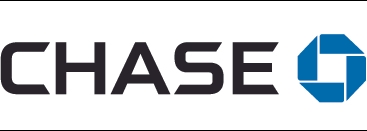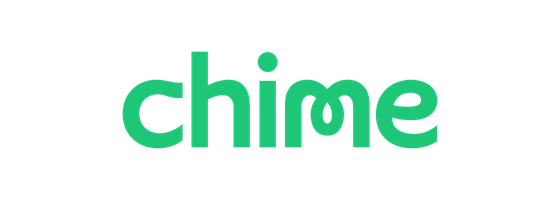Opening a teen checking account can be a great way to help kids learn the basics of money management. You can find teen bank accounts to fit different needs offered by traditional and online banks.
Who has the best student checking accounts? We reviewed teen checking options at a variety of financial institutions to find the answer.
Banks may refer to teen checking accounts as youth or student accounts, but they generally mean the same thing. A teen checking account is designed to hold deposits and allow teens to spend or withdraw cash via a debit card.
Here are eight recommendations for the best teen checking accounts to open.
Our recommendations
Best for parental controls
Best for parental controls
Axos First Checking
Axos Bank First Checking gives teens the flexibility to spend with a debit card or withdraw cash, while parents can oversee account management from their desktop or mobile device.
Axos Bank First Checking is a great checking account for teens aged 13 to 17, and parents who prefer a joint checking option. Parents can view their teen's spending, sync accounts to a centralized dashboard, set up account alerts, and lock or unlock their teen's debit card all through the Axos Bank mobile app.
The account requires no minimum deposit required and has no monthly fees. It also earns interest—a nice plus for teens who want to watch their balances grow. Teens can use their debit card to withdraw cash at any ATM, and Axos Bank offers up to $12 in foreign ATM fee reimbursements per month. (Note: A “foreign” ATM is one that isn’t a free ATM provided by your bank or its banking network, if the bank belongs to one.)
Pros:
- Convenient account management for parents and teens through the Axos Bank mobile app.
- No monthly fees or overdraft fees, and no non-sufficient–funds fees to worry about.
- Teens can use any ATM, with monthly ATM fee rebates.
Cons:
- No branch banking access.
- Some teens might find the $100 daily transaction limit restrictive.
Best for teens and tweens
Best for teens and tweens
Capital One MONEY Checking Account
The Capital One MONEY Teen Checking account includes plenty of great features, along with multiple ways to deposit and withdraw funds for added convenience.
Capital One is a well-known name in online banking and the MONEY Teen Checking account is designed with teens and tweens in mind. Parents can open MONEY accounts for kids eight and older, with no minimum deposit requirements or fees. Once teens turn 18, they can transfer their balances to a Capital One 360 Checking account.
This account comes with a debit card, which kids and teens can use to withdraw cash fee-free at more than 70,000 ATMs. Balances earn interest and you can get an even better rate with a Capital One Kids Savings account. Based on the fees and annual percentage yield (APY), it's one of the best savings accounts for kids.
Pros:
- No minimum deposit requirements and no fees.
- Parents and teens can manage accounts through the top-rated Capital One mobile banking app.
- Teens and kids can bank in person at Capital One cafes and branch locations.
Cons:
- Balances earn interest, but the APY isn't impressive.
- Branch and cafe locations are not available in every state.
Best for working teens
Best for working teens
Chase High School Checking
Chase High School Checking offers teens a full suite of financial management tools, without the high fees you'd expect from a traditional bank. Parents can also get younger kids aged six to 12 started with money management with a Chase First Banking account.
Chase High School Checking is a checking account for teens aged 13 to 17 that parents can open if they already have an eligible Chase checking account. Some of the main features include:
- Direct deposit and Chase QuickDeposit, which make it easy for teens to get paid or deposit their paychecks.
- Access to money transfer services through Zelle.
- Autosave, which allows teens to automatically transfer money from their checking account to a Chase savings account.
- Debit card access, plus access to thousands of Chase ATMs.
This account could be ideal for a working teen who wants a secure place to stash their paychecks or parents who prefer traditional banking to online banking. The main caveat to know is that parents must have a Chase checking account of their own to help their teen open a High School Checking account.
Pros:
- No monthly service fees and no minimum deposit requirements.
- Teens can manage accounts online, via the Chase mobile app, at Chase ATMs, or at Chase branch locations.
- Chase doesn't charge a monthly service fee for savings accounts linked to High School Checking.
Cons:
- Teens must visit a branch with their parent(s) to open this account.
- Parents must have an eligible Chase checking account.
Best for older teens
Best for older teens
Chime® Banking App
Chime is a solid pick for older teens who are looking for fee-free checking, with multiple options for depositing or withdrawing cash.
The Chime Account isn't specifically for teens, but it could be a good fit for 18- and 19-year-olds who are looking for a free checking option. Since this is an online checking account, there are no branches. But teens can withdraw cash at more than 60,000 ATMs fee-free.
Here's something else that makes this checking account a standout: Teens can deposit cash at more than 75,000 retail locations, including Walgreens and Duane Reade. You can deposit up to 1,000 every 24 hours and up to 10,000 monthly. That's a nice benefit you don't typically get with an online checking account.
Pros:
- No minimums and no monthly fees or overdraft fees.
- Teens can get up to $200 in fee-free overdraft benefits with the Chime Spot-Me feature.
- Chime can help account holders get paid up to two days early when they enroll in direct deposit.
Cons:
- Not designed for teens under 18.
- Teens may pay a fee to deposit cash at retail partners other than Walgreens or Duane Reade.
Best for reloadable debit card
Best for reloadable debit card
First Citizens Bank Together Card
The Together Card offers teens and kids the ability to spend, withdraw cash, and make deposits without fees, while making it easy for parents to add cash to their child's account balance.
First Citizens Bank doesn't offer a separate teen checking account. Instead, parents can set up a Together Card for teens or other family members as part of a family banking package. An eligible First Citizens Bank checking account is required to get a Together Card.
The card is tied to a deposit account and is reloadable, so parents can easily add cash with no transaction fees. That's an advantage over prepaid debit cards, which may require a load feed to add cash each time. Working teens can set up direct deposit of their paychecks to the card and withdraw cash at First Citizens Bank branches or ATMs.
Pros:
- Together Cards have no monthly fees when parents have an eligible checking account.
- No limit on the number of Together Cards parents can request, which is good for families with multiple kids and teens.
- If teens overdraw their account by accident, First Citizens will not charge an overdraft fee.
Cons:
- Only available to First Citizens Bank checking account customers.
- First Citizens has a smaller branch and ATM footprint than other big banks.
Best for military families
Best for military families
USAA Youth Checking
USAA Youth Checking could be a natural fit for military parents who want to introduce their kids to money management basics and already have accounts with USAA.
USAA offers bank accounts for military families, including the Youth Checking account for teens. The account has a low $25 opening deposit requirement and there are no monthly maintenance fees. Teens can also get a debit card which they use to make purchases or withdraw cash at more than 100,000 ATMs.
Other than the $25 opening deposit, the main requirement to open this account is USAA membership. Membership is extended to military members and their families. There's no minimum age requirement children need to meet for a Youth Checking, but they must be at least 13 to get their own account login at USAA.com or through the USAA mobile app.
Pros:
- Low opening deposit, paired with no monthly maintenance fee.
- Parents have multiple options for funding the account, including direct deposit and mobile check deposit.
- Teens have access to a sizable ATM network which outstrips other banks.
Cons:
- Balances earn interest but the rate is the lowest you'll find at any bank.
- Not available to non-USAA members.
Best for introductory reward
Best for introductory reward
Valley Bank My Teen Checking
Valley Bank could be an attractive option for parents and teens who want a checking account that offers an initial reward and prefer a brick-and-mortar bank to an online bank.
Valley Bank is a rarity in that it offers an introductory reward with new teen checking accounts. The reward isn't exorbitant—just $25—but it's a nice incentive to consider banking here in place of other teen checking options. All teens have to do to qualify for the reward is sign up for a debit card for the account.
Teens can manage their accounts online, at ATMs, or at Valley Bank branches. This account could be a good stepping stone for teens to learn how a checking account works, with no monthly fees.
Pros:
- $25 reward when teens open an account and sign up for a debit card.
- Transactions at Valley Bank ATMs are always free and teens can also manage their accounts at a branch or online.
- No monthly fees and no fees for mobile banking access.
Cons:
- Valley Bank has limited branch and ATM locations.
- This account doesn't earn interest and there are no ongoing rewards.
Best for college-bound students
Best for college-bound students
Wells Fargo Clear Access Banking
The Wells Fargo Clear Access Banking account keeps things simple for teens who want a checking account that can follow them to college.
Wells Fargo Clear Access Banking is a checking account that is designed for teens as young as 13 and young adults up to 24 who are enrolled in school. There is a $5 monthly service fee but there are multiple ways to avoid it. Teens pay no overdraft fees and it's worth noting that this is a checkless checking account.
You'll need $25 to open the account and parents must accompany teens under 18 to a Wells Fargo branch to set up Clear Access Banking. Older teens 17 and up may consider the Everyday Checking account and apply for a Campus Card, which can double as a Wells Fargo ATM card and official campus ID.
Pros:
- Simplified checking account with multiple ways to waive the monthly fee.
- The minimum deposit requirement is low and there are no overdraft fees.
- Teens can spend or withdraw cash with a linked debit card and manage accounts online or at Wells Fargo branches and ATMs.
Cons:
- Teens under 18 must visit a Wells Fargo branch to open an account with their parents.
- $5 monthly service fee applies.
Best teen checking accounts compared
|
| | | | | |
Capital One MONEY Teen Checking | | | | | |
Chase High School Checking | | | | | |
| | | | | |
First Citizens Bank Together Card | | | | | |
| | | | | |
Valley Bank My Teen Checking | | | | | |
Wells Fargo Clear Access Banking | | | | | |
Methodology
We compared checking accounts for teens at financial institutions, including traditional and online banks. In evaluating different teen checking accounts we considered the age ranges each account was intended for, minimum opening deposit requirements, monthly fees, account access, and added features such as rewards or interest. The banks selected represent the best overall in their respective categories.
Alternatives to the best teen checking accounts
A checking account isn't the only way to help teens learn about money management. There are a few other account types you might consider instead.
Savings account
You might consider a savings account for kids in place of a checking account if you'd like to help your child stash money for specific goals. Working on saving for a new video game or something bigger, like a first car, will teach them habits that will serve well later on, when their goal may be down payment on a home or retirement.
When comparing the best savings accounts for kids, consider the opening deposit requirement, fees, and of course, the interest rate they might earn on balances. Online banks may offer higher APYs than traditional banks, with lower fees and deposit requirements.
Reloadable debit card
A reloadable debit card can give teens spending power without requiring them to have a standard checking account. You can add money to the card, which your teen can spend —managing an allowance is a preview of handling a paycheck. Once the money runs out, you'll need to reload it for them to use it again.
Reloadable debit cards can also allow teens to withdraw cash at ATMs if needed. Some cards may allow your teen to enroll in direct deposit so they can easily add their paychecks to the card. If you're shopping for reloadable debit cards for teens, consider any fees you might be charged to deposit funds or maintain the account every month.
Investment account
You might consider a brokerage account for your child if you're interested in giving them a head start with investing. Any brokerage account you open on behalf of a minor would need to be a custodial account, meaning you would technically own it until they turn 18.
Depending on the brokerage, you may set the account up as a UTMA/UGMA account or a 529 college savings plan. Either one can be a great way to purchase investments for kids starting at an early age. The UTMA/UGMA account will give you more flexibility and isn’t limited to spending for education.
More on best teen checking accounts
What is a teen checking account?
A teen checking account is a bank account that's designed for a teenager, typically aged 13 to 17. Some banks offer checking accounts for teens, tweens, and younger children, all of which require a parent's consent and help to open.
You can find teen checking accounts at online banks, credit unions, and traditional banks, with wide variations in features and fees. Parents may want to start by seeing what's available at their own bank before widening their search. The features discussed in this article will provide tools for evaluating the options.
How does a teen checking account work?
Teen checking accounts allow the parent to open an account on behalf of their child. The parent ultimately owns the account while the child is under 18, but it can transfer to the child once they reach that age. At 18, a child can generally open an account on their own. But there are benefits to having a teen account.
Typical features of teen checking accounts include:
- Lower daily, weekly, and monthly transaction limits than standard checking accounts.
- Debit card access.
- Parental controls, such as the ability to lock or unlock the account's debit card and personalized spending controls.
Some teen checking accounts earn interest, and many of the options offered online have no monthly maintenance fee. Once a teen turns 18, their account may convert to a regular checking account or remain a student account until they reach a certain age if they're enrolled in school.
How to choose the best checking account for a teen
The best checking account for your teen ultimately depends on knowing which features and benefits are most important. It's helpful to consider the following:
- Monthly maintenance fees, if any.
- Other fees, such as overdraft fees or foreign ATM fees.
- Debit and ATM card options.
- Branch and ATM access.
- Online and mobile banking features.
- Rewards or interest.
- Minimum opening deposit requirements
- Daily, weekly, or monthly transaction limits.
- Parental controls.
You may also want to consider how easy it is to open a teen checking account. Some banks allow you to open checking accounts for teens online, while others require you to visit a branch.
How to open a checking account for a teenager
As noted above, you'll first need to check with the bank to find out if you can open an account online or if you'll need to visit a branch. The next step is gathering the required documents, which include:
- Your valid, government-issued ID.
- Your Social Security number.
- Your address, phone number, and email address.
- A valid form of ID for your teen, which can include a birth certificate, Social Security card, or passport.
You'll also need a minimum opening deposit, if one is required. A typical minimum deposit for a teen checking account can range from $0 to $25.
TIME Stamp: Do your homework when comparing teen checking accounts
Plenty of banks offer teen checking accounts, but one may be a better fit than another based on the features or fees. Looking at all of the options offered online and at brick-and-mortar banks can help you make a more informed decision about which one to open.
Frequently asked questions (FAQs)
Can I open a teenage bank account online?
It's possible to open a teen bank account online, though not all banks offer that option. Parents of teens under 18 will need to provide proof of identity for their child, which may include a birth certificate or Social Security number, to open a bank account for a child online. Teens 18 and older can open bank accounts online themselves.
Can a minor have a checking account?
A minor can have a checking account if it's co-owned by a parent or legal guardian. Generally, state laws prohibit children under 18 (or 19 in some states) from owning bank accounts in their names.
What happens to a teen checking account when I turn 18?
That depends on the bank. Some banks may allow you to keep the account as-is if you're enrolled in school up to a certain age, which may be 22 to 24. Other banks will convert teen checking accounts to regular checking accounts once a teen reaches the legal age of adulthood in their state.
The information presented here is created by TIME Stamped and overseen by TIME editorial staff. To learn more, see our About Us page.













